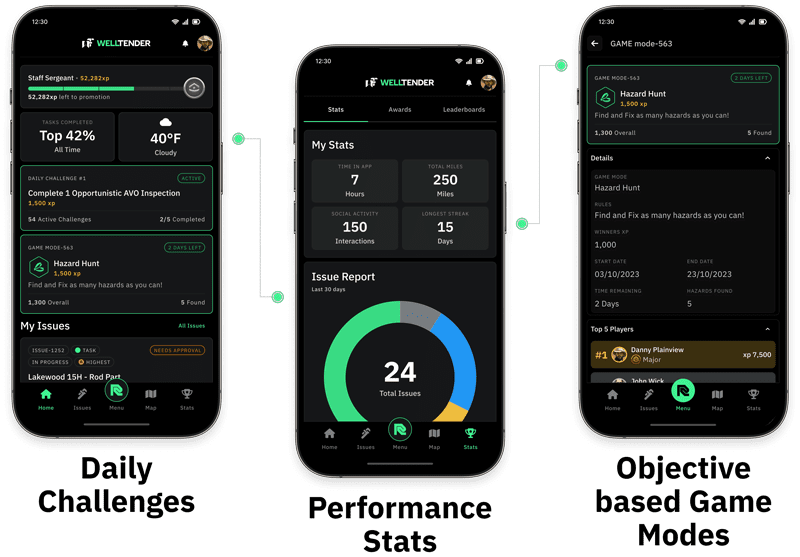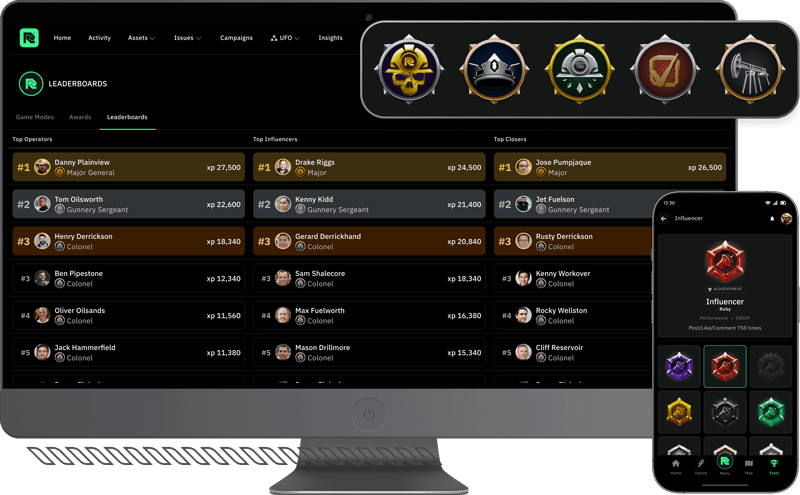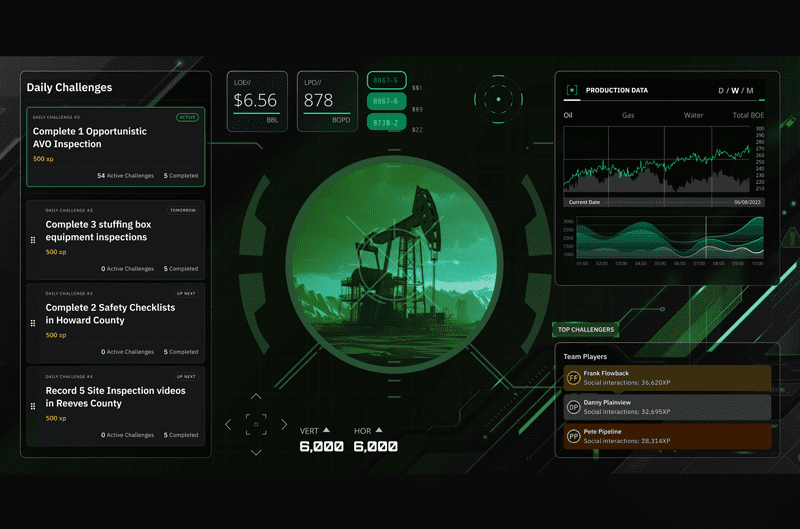The oil and gas industry faces a complex set of challenges as it metamorphosizes into the all-encompassing energy industry that not only attempts to carve out fossil fuels’ placement, but also embraces the energy transition. Those challenges surface at the entrance of a new and younger working professional generation. Still, there is also the need to set them up for success while fostering a work environment that meets their needs. Using gamification, piggybacked on a video gaming mentality, ResNet has developed a strategy and platform designed to unify the field and office personnel by gamifying asset and operations management workflows and processes.
As long-standing industry professionals seize retirement opportunities, companies must transition the next generation into highly technical and critical job positions. The generational gap requires a new strategy for connecting with employees and ensuring they perform as needed.
According to Ryan Rice, founder and CEO of ResNet, energy companies must improve their data and initiative tracking largely due to the continual change in the regulatory environment. Gamification serves as a methodology to enable such improvements.
“We need to be able to incentivize and influence those initiatives better, faster, cheaper and stronger,” says Rice. “It’s here that the idea of gamification came into play.”
What is Gamification?
According to Erin Fair, ResNet’s head of experience, gamification refers to the process of taking gaming mechanics and applying them to a non-gaming scenario. When discussing gaming, most would apply the terminology to a younger generation; however, it can be related to all age groups. While it does appeal to a younger generation, that group retiring from the industry might need to realize how the process of gamification affects their lives.
Point systems and loyalty programs are examples of gamification. Airline points are one of the more popular versions. When booking a flight, the airline rewards the action taken to make reservations. Loyalty programs promoted by well-known coffeehouse chains and liking posts on social media are all examples of gamification.
“Gamification at its core is behavioral psychology,” says Fair. “It focuses on identifying the actions we want people to take to get to the objectives we want and identifying tools to wrap it into some type of game. The game would have rules, objectives and players.”
So, while applying the strategy to varying worker demographics might seem complicated, the more significant challenge is alignment. Even though specific age brackets might not seem receptive to a platform that mirrors video gaming, they have been exposed to gamification in some sense, such as those reward programs.
Fair says, “The real magic happens when you take what the users want, and you take what the businesses want, and then you align them, so everything is working in harmony.”

Applying to the Energy Sector
According to Rice, gamification can improve the energy industry’s data development and cultivation. Successful implementation of this process allows for business optimization. In many cases, a simple picture created from the most basic action using a smartphone provides needed information to be studied and used by anyone in the company.
“Let’s take, for example, I have an upcoming workover, and I need to know certain things to add to my procedure,” explains Rice. “Instead of requesting pictures of the work site, gamification can be used as a daily challenge playlist. It is like a Spotify playlist where we have codified actions and behaviors for which we are looking. In this case, we are looking for a picture of a specific site or asset.”
Rice continues, “We built the playlist, and it prompts the user repeatedly and opportunistically, so tomorrow, the daily challenge is to snap a selfie by the wellhead and upload it to that asset’s Facebook page.”
The information gained by the daily challenge results in instant gratification. The picture is posted for all to see immediately. It does not require sending via email or text. Additionally, this process allows the business to track engagement and the company’s top performers.
Rice offers another area of interest harnessed by energy companies in the hazard hunt application. Historically, in this process, potential hazards of varying effects are identified, and mitigative action is implemented to ensure workplace safety. Gamification offers the ability to promote and enable participation and success.
“We’ve seen a 30 to 45 percent increase in overall engagement measured by the quantity and the subjective quality of those hazards identified,” says Rice. “If all we do is activate our hazard hunt game mode for the month, we can show a leaderboard and offer cash rewards for going over and beyond.”
Where Does the Motivation Lie?
According to Fair, traditional rewards programs are extrinsic in nature and create a transactional baseline. ResNet’s energy industry-specific platform utilizes intrinsic methods that offer immediate recognition and lead to empowerment.
“Traditional gamification methods focus on a singular metric which can demotivate people,” says Fair. “Everyone out there is an individual, so it is good to highlight those individual traits.”

ResNet allows the platform user to close the loop when automating these actions. Rewards automatically occur and are assigned to each individual without running analytics. The results are compiled into a dashboard, where the information must be manually retrieved and reward decisions made. Each game participant sees the fruit of their labor instantaneously. Here, the empowerment aspect is birthed and catalyzes the desire to improve.
“In some instances, when we have turned on the gamification system, we have seen a 400 percent increase in overall total engagement, start to finish, over the course of a year,” says Fair.
Energy Sector Use
According to Rice, the ResNet platform remains exclusive to the energy industry. In an industry measured by profitability with a significance placed on nonproductive time, ResNet has enabled its clients to increase their annual total net production by one percent by mitigating costly downtime.
At the user level, Rice points to a savings of more than two hours saved per individual user in the entire operational stack. This includes everyone at the field level in the engineering unit and office personnel.
As the future of the energy sector evolves, it will do so in the hands of a new adaptation of the everyday worker. Because technology is embraced and not feared, as the industry transitions with new employees entering, gamification will only further develop and be entrenched in nearly all aspects of the workday. Gaming skills and mentality learned in childhood and carried into adulthood serve as the platform for the gamification strategy.
Rice says, “Gamification is our special sauce and how we motivate people utilizing our platform.”
Headline photo: This picture is just an artistic concept graphic that Erin uses for blog posts about the overall gamification system. Graphics courtesy of ResNet.
Nick Vaccaro is a freelance writer and photographer. In addition to providing technical writing services, he is an HSE consultant in the oil and gas industry with twelve years of experience. Vaccaro also contributes to SHALE Oil and Gas Business Magazine, American Oil and Gas Investor, Oil and Gas Investor, Energies Magazine and Louisiana Sportsman Magazine. He has a BA in photojournalism from Loyola University and resides in the New Orleans area. Vaccaro can be reached at 985-966-0957 or nav@vaccarogroupllc.com.







